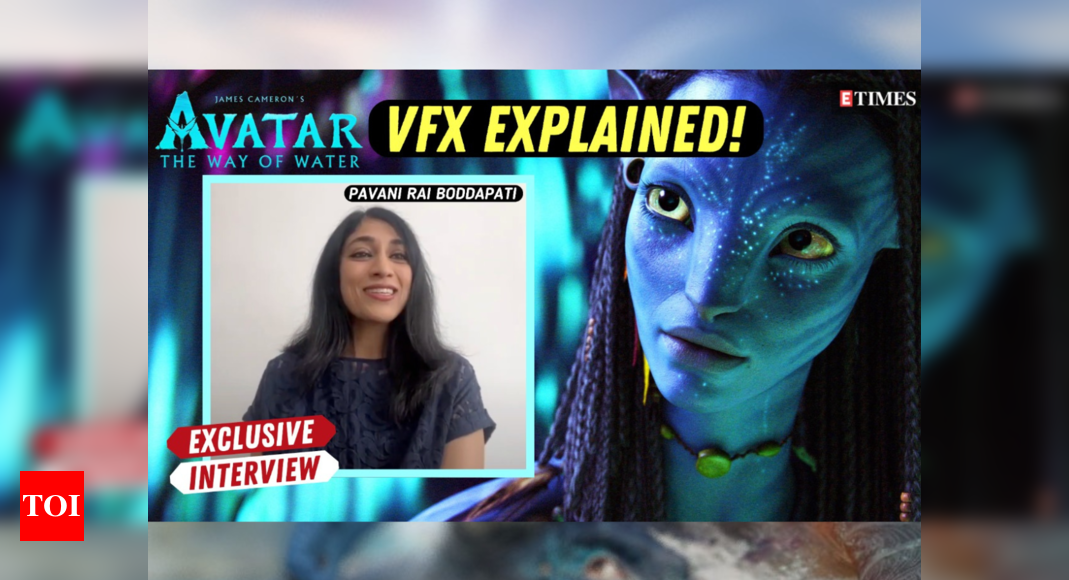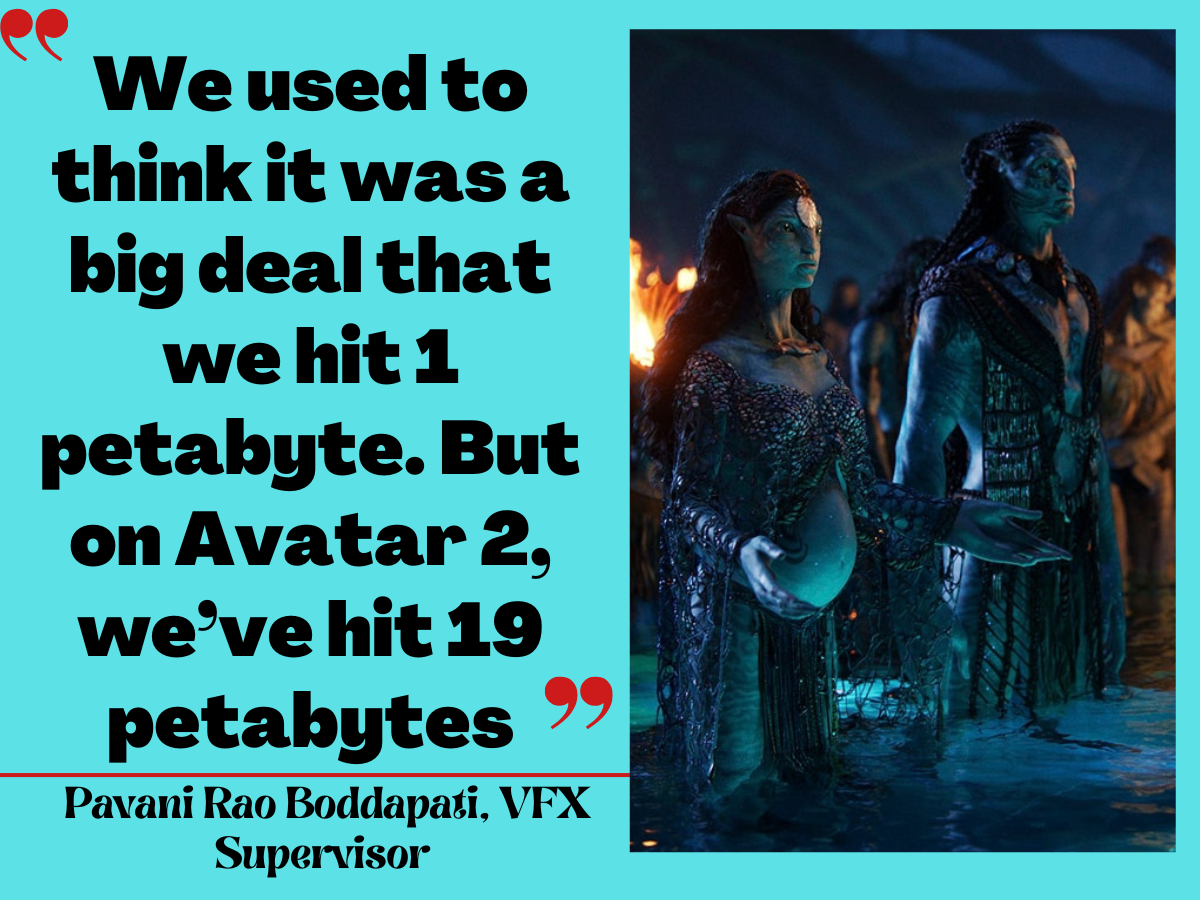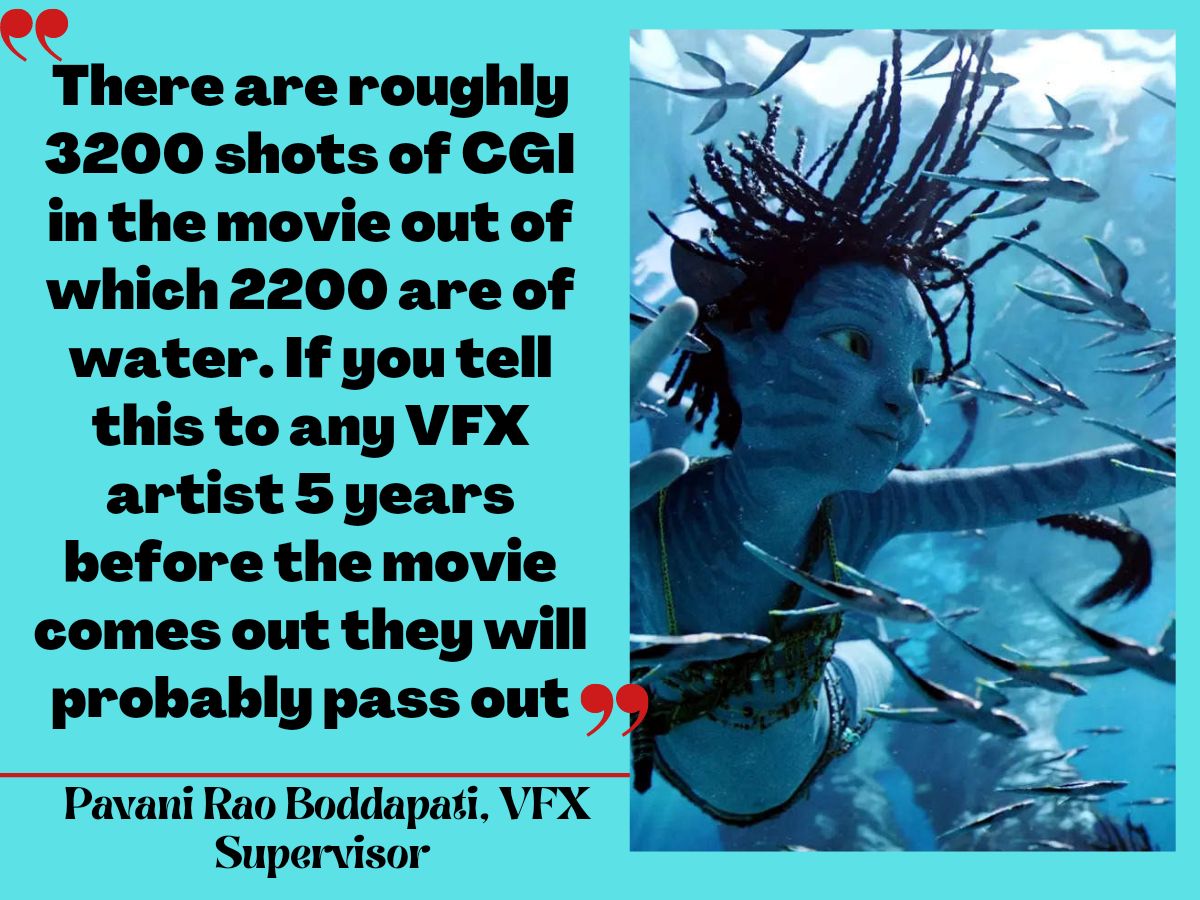
https://www.youtube.com/watch?v=xzqx2CtL-U8
Explaining the effort that’s gone into staging the technical marvel, Pavani revealed, “Our crew has been working on Avatar: The Way Of Water for 5 years and some members of my team have been working on this project for 10 years. We’ve all been working on this since Avatar came out in 2009. It’s not always the case that VFX artists who work on a film are thrilled and excited to watch it or are 100 percent about what they’ve produced. But it happened here.”
Detailing the herculean task of making Avatar 2, Pavani shared some striking statistics. She said, “There are roughly 3200 shots of CGI in the movie out of which 2200 are of water. If you tell this to any VFX artist 5 years before the movie comes out they will probably pass out. That’s because the process is very difficult. We’ve done water movies before. Along with our Senior VFX Supervisor Joe Letteri, we worked on James Cameron’s Alita: Battle Angel in 2017, where that project became a test bed to figure out what it will take to create the underwater shots for a film. That movie had just 10 shots of the lead character putting on a suit and going under water and yet it took us a year to get those shots right. Imagine the time it took for Avatar’s 2200 shots.”

Not shying away from labelling Avatar 2 a mammoth production Pavani claimed, “Avatar: The Way Of Water is the biggest visual effects film that Weta FX has done so far. And Weta has been around forever, so I guess that’s a pretty big deal.”
On the flip side, there have also been reports that Avatar 2 screenings across the world and in India, have been suffering some form of technical snags as well. There were news reports that mentioned that several theatres in Japan screening Avatar 2 crashed mid-show. While hundreds of viewers in India have also noticed technical glitches and snags in some Avatar screenings. While it’s not a direct explanation for the hiccups, Avatar 2’s variable frame rate has brought in the extra element of challenge for its screenings.

Talking about the need to have different frame rates for the Avatar shots, Pavani explained, “The entire film was shot at 48 frames per second, but there are some shots that were done at 24 frames per second. Some viewers were able to tell the difference between the variable frame rates. Rendering 48 FPS for the entire film is quite the feat because it needs to process twice the amount of images. The data storage for Avatar back in 2009, six months before release hit the 1 petabyte mark and everyone in the Weta FX team got a reward for that landmark. We used to think it was a big deal that we hit 1 petabyte. But on Avatar 2, we’ve hit 19 petabytes. That’s because rendering 48 FPS means everything has to be done two times over. Twice the number of images, you have to store it all, compositors have to QC and store more data. That’s why Jim decided to take a call on shots that would have 48 FPS. These were scenes where in 24 FPS you would end up noticing strobing or motion blur.”
Since a lot of Avatar 2 features underwater scenes, the 48 frames were most crucial. Pavani explained, “We always knew the underwater shots would be 48 FPS because they needed it. Sometimes we’ve used 48 FPS in shots with a fast moving camera or in shots of Jake Sully swerving really close to the screen. The dialogue based scenes or just one person talking, were limited to 24 frames.”